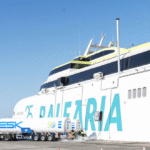October 20, 2025. The government of the Argentine province of Mendoza, through the Undersecretariat of Transportation, presented 10 of the 16 new buses powered by compressed natural gas (CNG) that were incorporated into the MendoTran system. The initiative is part of the 2030 Mobility Plan, whose central axis is the concept of sustainable transportation that promotes the use of low- or zero-emission technologies.
The units begin service on different routes throughout Greater Mendoza and belong to the eight private companies that make up the Mendotran system. Each vehicle has a seating capacity of 27 people and a total of 90 passengers. They also incorporate eight internal security cameras that record trips and enhance user safety.
“The truth is that public transportation in Greater Mendoza is a luxury,” said Governor Alfredo Cornejo, adding that “it’s enough not only to compare it with other Argentine provinces, but with any city in the world.”
Likewise, the Minister of Government, Infrastructure, and Territorial Development, Natalio Mema, explained that these are high-tech Chinese CNG buses, which emit only 30% of greenhouse gases compared to conventional vehicles. “This is a first step; this is a long-term step because the energy transition is with CNG in Argentina, a gas-producing country. We began investing 10 years ago, precisely to generate permanent gas consumption throughout the year,” he stated.
The official emphasized that the strategy seeks a gradual conversion of the system, with an eye toward future electric buses, and underscored the economic benefits of CNG. “It consumes approximately 30 or 40% less money, depending on the price of natural gas and fuel,” he indicated, adding that the idea is to encourage the use of CNG in the system by adjusting the cost per kilometer.
For his part, Undersecretary of Transportation, Luis Borrego, emphasized that the new units have an approximate range of 350 kilometers thanks to the addition of eight fast-filling tanks. “Each vehicle required an investment of USD250,000, and together, the addition represents a total investment of USD4 million, a value equivalent to that of diesel units, but with the advantage of being less polluting and having a lower fuel cost,” he emphasized.




